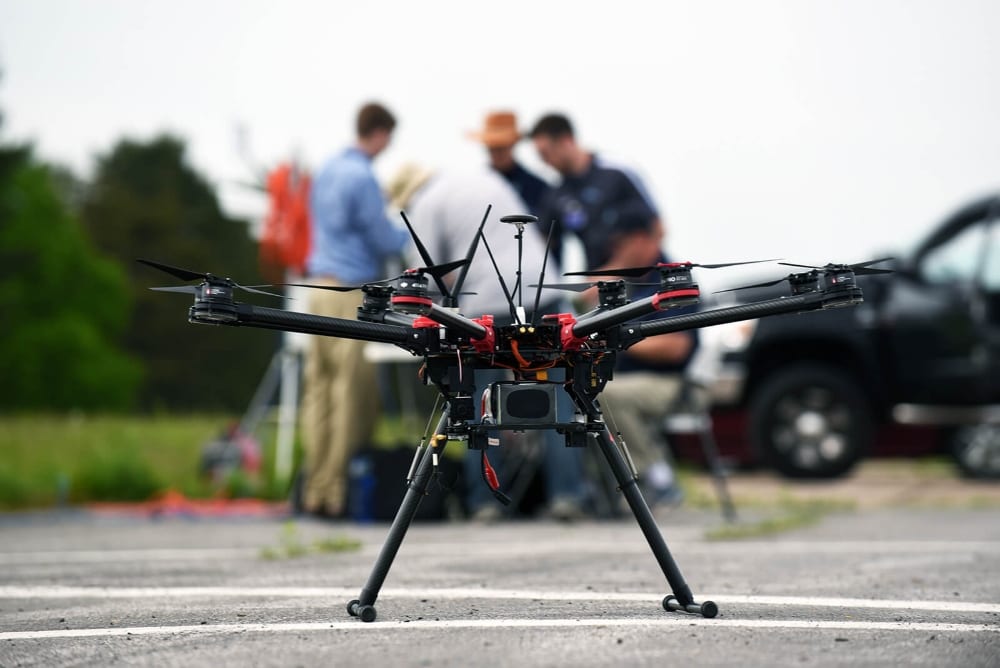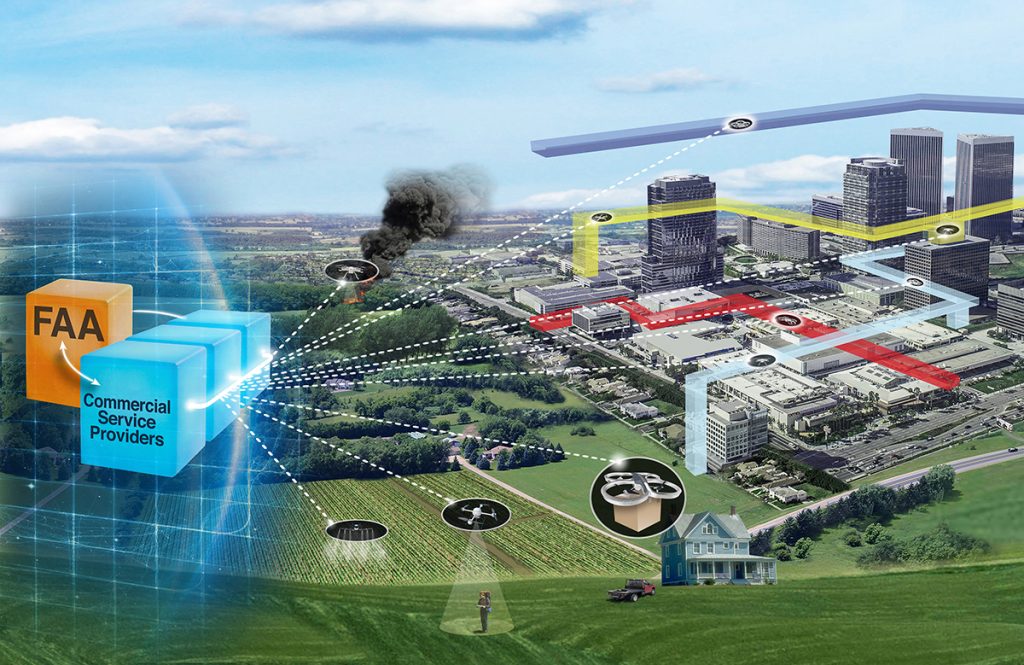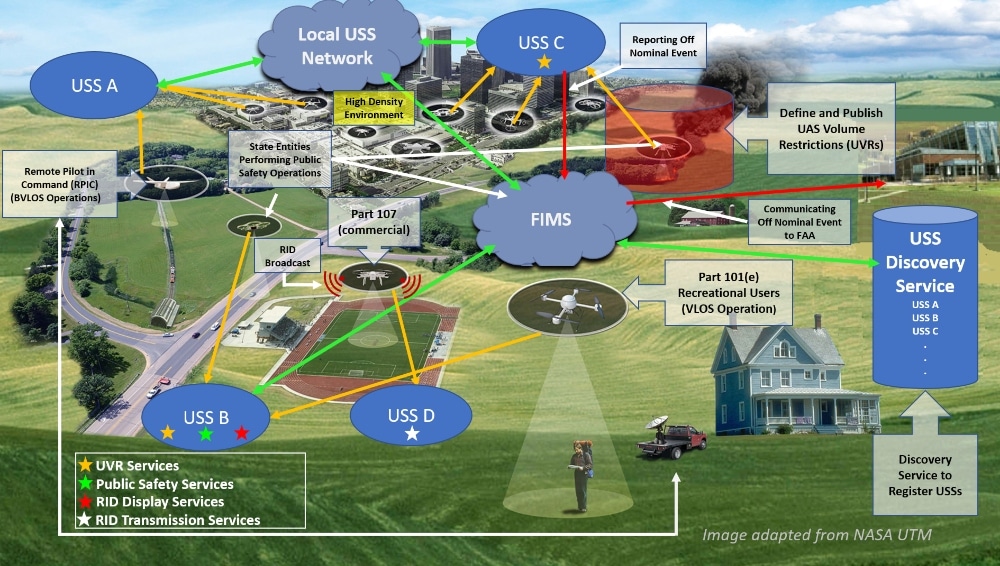The FAA Has Completed Its UTM Testing—Now What?
BY Zacc Dukowitz
3 February 2021Toward the end of 2020, the FAA completed Phase 2 of its UTM (Unmanned Traffic Management) testing.

Photo credit: NUAIR
This was the most complex level of testing it had ever conducted, and it was also the final phase of testing for its UTM Pilot Program (UPP).
The Phase 2 testing was conducted at both of the test sites the FAA had previously selected as partners for this phase of its UTM program: The Virginia Tech Mid-Atlantic Aviation Partnership in Blacksburg, VA, and Griffiss International Airport in Rome, NY.
The UPP Phase Two (UPP2) testing involved over 100 partners and required an impressive amount of coordination and planning. Its focus was on managing unmanned traffic in complex urban environments, where manned aircraft were also present and the number of factors to consider created a high degree of technological complexity.
[Phase 2 testing] showcases capabilities and services that support high-density Unmanned Aircraft Systems (UAS) operations, including remote identification (Remote ID) services and public safety operations.
– The FAA
Participants in the testing included drone operators, local public safety agencies, local and state elected officials, private companies, and representatives from international civil aviation authorities, among others.
Here is some footage from the FAA showcasing the tests:
The Future of UTM in the U.S.
The FAA’s completion of its UTM testing is not just the culmination of that organization’s work, but also of work originally started by NASA.
Before the FAA did its two phases of testing, NASA went through four different Technical Capability Levels, each of which had associated tests and demonstrations. This work started in 2016 and was handed off to the FAA in 2019, after three years of hard work.


Image credit: NASA
But now it looks like the tests have all been completed. So what’s next for UTM in the U.S.?
The answer to that question can be found, at least in part, by looking at what the Phase 2 testing covered—one of the main technologies it focused on was Remote ID.
In this context, we can see that the FAA’s new Remote ID rule pushes forward a key requirement for UTM to be possible. According to the FAA, the future of unmanned traffic lies in establishing a complete UTM ecosystem within the U.S., and Remote ID is an important part of that ecosystem.
Another important part of the ecosystem is the FAA’s Flight Information Management System (FIMS), which supports information exchanges and protocols between UTM
participants and FAA systems.
But even though Phase 2 testing is complete, Remote ID is live, and FIMS has been tested and honed, there will most likely be a lot more testing and research conducted before the FAA rolls out full UTM capabilities in the national airspace.
The FAA’s new BEYOND program will be one place where this testing will take place—an express goal of the UPP is to enable BVLOS (Beyond Visual Line of Sight) operations, and the BEYOND program is also focused on conducting tests for BVLOS.
Another place where BVLOS and other UAS testing will continue is at those universities who have received research grants from the FAA as part of the ASSURE initiative.
In the short term, the end result of all this testing may be a new rule allowing BVLOS operations, just like the IPP’s testing (among other initiatives) recently resulted in new rules allowing flying at night and over people.
The Implications of UTM for Drone Service Providers
Drone companies who have a stake in UTM development like to tout their technology as a win-win for them and drone service providers, since it provides a clear path toward growing the capabilities of commercial drone work.
As they describe it, implementing UTM—and thus enabling BVLOS—will spur the drone industry to new growth, and this will be good for everyone.
But some drone service providers, especially those dronepreneurs who work for themselves at small, single-pilot operations, are wary of a future that will have greater requirements for flying, with what could be mounting costs associated with them.


FAA rendering of what UTM might look like in the future
This fear was manifest in the outcry around the FAA’s original proposal for Remote ID.
When the FAA publicly shared its draft Remote ID rule in early 2020 it garnered over 50,000 comments, many of them negative.
One of the biggest concerns about the draft rule was that it required a subscription service for drone pilots to get Remote ID, and pilots worried that this service would be offered by private companies who might one day spike its price.
Similar concerns about the costs of upgrading to Remote ID-compliant technology. circulated at the time, with fears that some drone pilots might be priced out of flying.
These concerns still seem valid when thinking about the future of UTM for drone service providers, not to mention hobbyists.
On the FAA’s UPP webpage, a possible future for UTM is described like this:
Operators would likely be able to access UTM, for example, through smart phone applications to map routes for UAS flights and check for flight restrictions.
We can only imagine that some drone service providers will be concerned about how much that app will cost, and who will be offering it, just like they were worried about who would be offering Remote ID subscriptions.
On the other hand, it’s important to note that LAANC capabilities (the FAA’s program for offering instant airspace authorization at most airports in the U.S.) are offered for free through several different apps, and that a future UTM app could follow the same kind of model.
Either way, it will certainly be interesting to see how quickly UTM gets rolled out in the U.S., and whether it’s done piecemeal or all at once.
Are you concerned or excited about the rollout of UTM in the U.S.? Share your thoughts in this thread on the UAV Coach community fourm.


